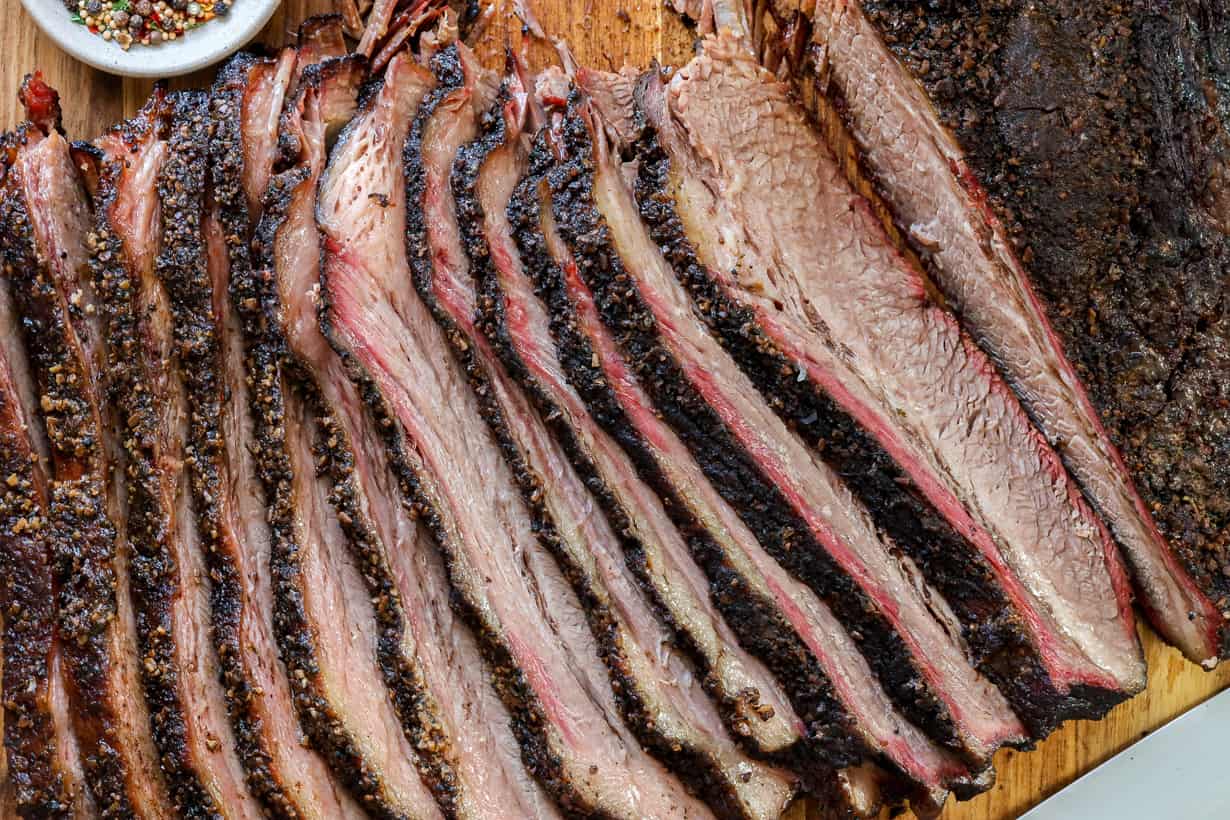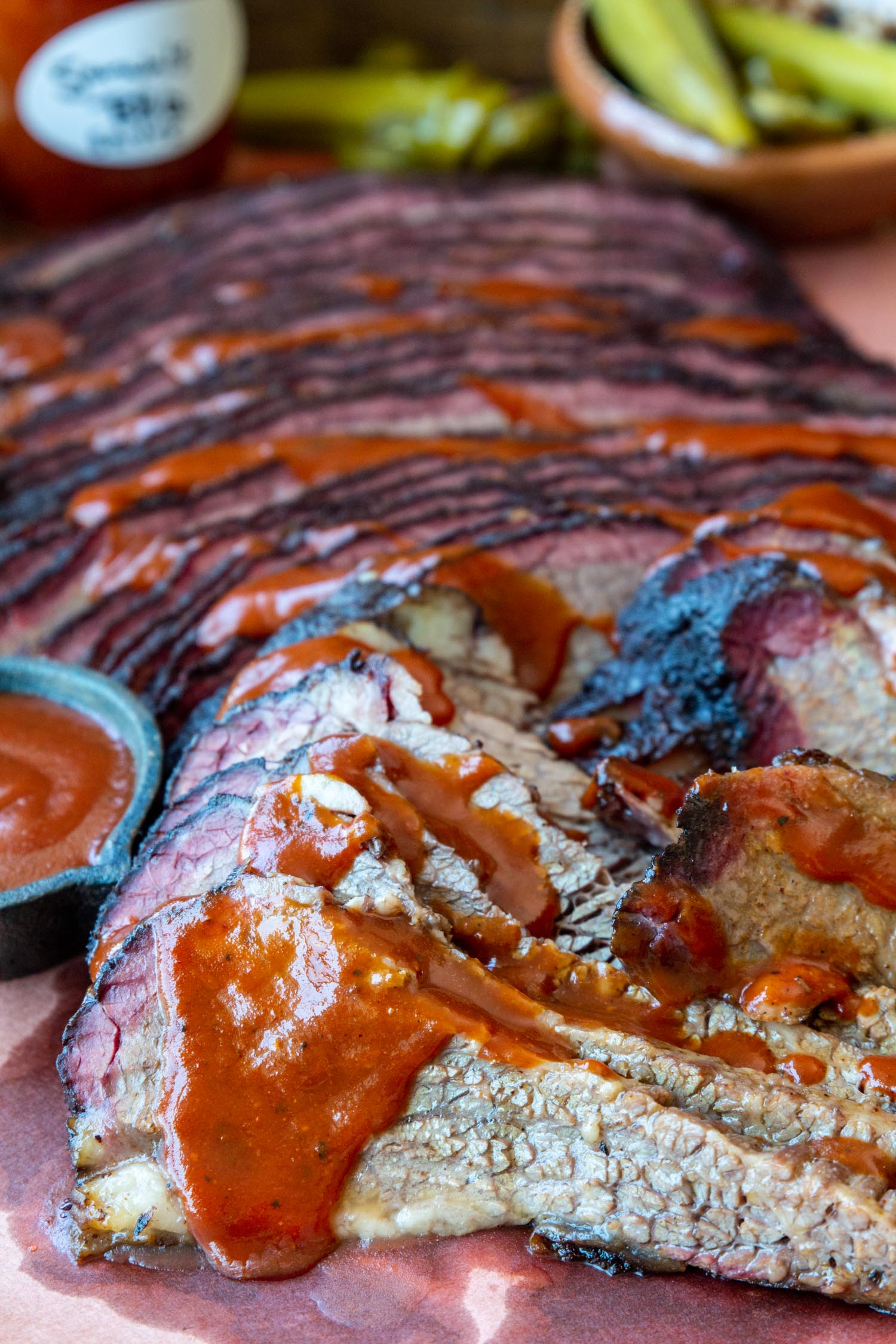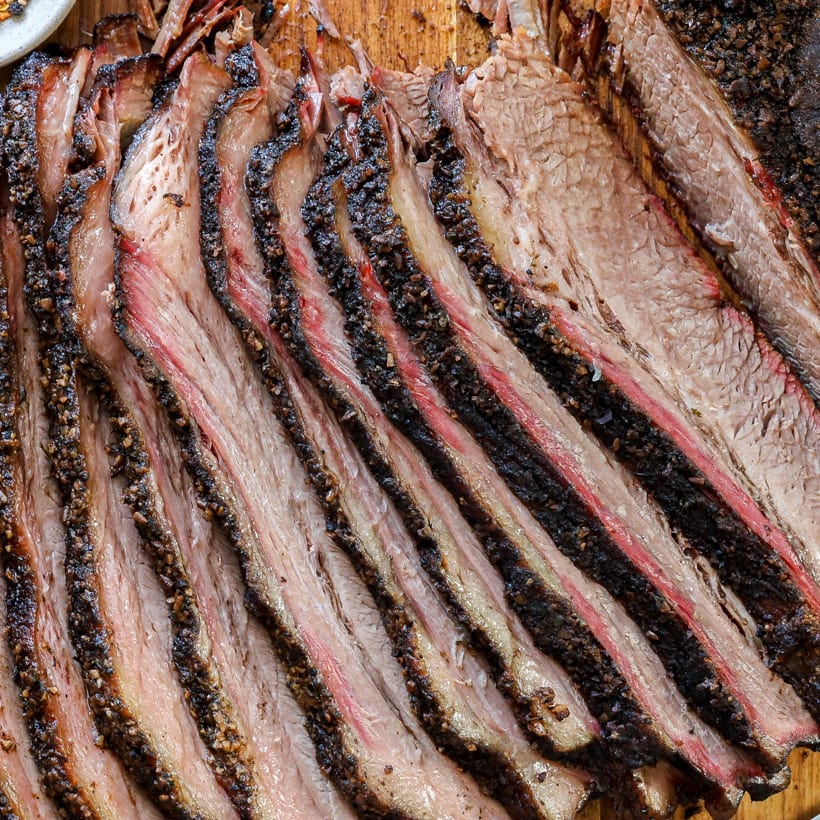
The Rise of Smoking Brisket at 250°
History of Smoking Brisket
Smoking brisket has deep roots in culinary traditions, particularly in regions where barbecue is more than just a cooking method but rather a cultural event. The practice likely finds its origins in the Southern United States, where brisket became a staple due to its availability and affordability. Pitmasters have long revered brisket for its rich flavor and remarkable tenderness when prepared correctly. As barbecue competitions began to flourish, the technique for smoking brisket was refined through generations, leading to the flavorful, smoky delight we cherish today.
Throughout history, cooking brisket low and slow has been the standard—often at temperatures around 225°F. However, as cooking methods evolved, so did the techniques and practices surrounding barbecue, resulting in innovative approaches influencing how brisket is smoked today.
Introduction to Smoking at 250°
Raising the smoking temperature to 250°F has garnered popularity among home cooks and competition pitmasters alike. Many have found that cooking brisket at this slightly higher temperature not only reduces cooking time significantly—cutting it from about 1 hour per pound to roughly 30 minutes per pound—but also helps achieve a delightful balance of tenderness and texture.
The 250°F method allows for efficient cooking while still providing ample time for the smoke to flavor the brisket deeply. For anyone looking to impress guests at their next barbecue or to explore the rich world of smoking brisket, this approach offers a rewarding, delicious experience worth trying.

Understanding the Science Behind 250°
Effects of Cooking Temperature on Brisket
When it comes to smoking brisket, temperature plays a pivotal role in the outcome of the meat. Cooking at 250°F stands out, offering a sweet spot for achieving that perfect balance of tenderness and flavor.
- Faster Cooking Times: At 250°F, a brisket typically cooks about 50% faster than at lower temperatures like 225°F. Instead of the traditional 1-1.5 hours per pound, many find they can submit their brisket to the smoker for as little as 30 minutes per pound.
- Enhanced Fat Rendering: The increased heat promotes better fat rendering, which transforms tough, nearly inedible strips into succulent bites. This is crucial for delivering the juiciness that barbecue lovers crave.
However, be aware of potential pitfalls. Cooking at temperatures exceeding 250°F may risk drying out the meat if not carefully managed.
Benefits of Low and Slow Cooking
Low and slow cooking is not merely about temperature; it’s a philosophy that encompasses both patience and science.
- Collagen Breakdown: At low temperatures, collagen—the connective tissue in brisket—gradually breaks down into gelatin, yielding moist, fork-tender meat. This process can take several hours, highlighting the importance of not rushing the cooking.
- Flavor Development: The Maillard Reaction occurs more profoundly at these temperatures, creating complex flavors and a beautiful bark over the surface of the brisket.
Thus, cooking brisket at 250°F allows for a delicate balance of time and heat, providing a flavorful result that both novices and seasoned experts can appreciate. It’s where the art of barbecue begins to shine!
Mastering the Art of Brisket Preparation
Preparing the Brisket Before Smoking
Before you even think about firing up the smoker, preparing your brisket is crucial for achieving a mouthwatering final product. Here are some essential steps:
- Selecting Quality Meat: Start with a well-marbled brisket. Look for a good fat cap; this layer of fat is essential as it helps maintain moisture throughout the smoking process.
- Trimming: Trim any excess fat from the brisket, but leave about a quarter-inch layer. This will ensure that your meat retains its juiciness while allowing the rub to penetrate.
- Seasoning: Generously apply a dry rub to the brisket. A simple mix of kosher salt, black pepper, garlic powder, and paprika can enhance the flavor. Massage the rub into every crevice; this not only adds flavor but also helps create a crust when smoked.
- Room Temperature: Let the seasoned brisket sit at room temperature for about 30 minutes. This helps in cooking it evenly once it’s on the smoker.
Techniques for Achieving the Perfect Bark
Achieving that coveted bark—the crunchy, flavorful crust on the outside of the brisket—requires some skill and technique. Here are some tips:
- Keep the Temperature Steady: Maintaining a smoking temperature between 225°F and 250°F is crucial. This range allows for adequate smoke absorption without burning the brisket.
- Use the Right Wood: Smoking with hardwood chunks, like mesquite or hickory, adds depth to the bark. Avoid using softwoods, as they can impart undesirable flavors.
- Moisture Management: Consider placing a water pan in your smoker to create a humid environment. This can help develop the bark while keeping the meat juicy.
- Avoid Opening the Smoker: Don’t be tempted to frequently check the meat. Every time the door is opened, you let heat escape, prolonging the cooking time and affecting the formation of your bark.
By mastering these preparation techniques, you’ll be well on your way to creating a truly remarkable brisket that will leave your guests raving!

Flavor Enhancements and Seasonings
Types of Wood for Smoking
Choosing the right type of wood for smoking can significantly impact the flavor of your brisket. Here are some popular options:
- Hickory: Known for its strong, smoky flavor, hickory is a favorite among many pitmasters. It can deliver a robust taste that pairs beautifully with beef.
- Oak: A versatile choice, oak provides a balanced flavor—smoky without overpowering. It’s ideal for those looking for a classic BBQ experience.
- Mesquite: With its intense flavor, mesquite is best used in moderation. It works wonders for quick, high-heat cooks, but can become overwhelming if used excessively.
- Fruitwoods: Apple and cherry wood offer a mild, sweet flavor that complements brisket well. They provide a more subtle smoke profile, making them great for beginners.
Choosing the right wood can elevate your brisket game, so don’t hesitate to mix and match to find your perfect smoke blend!
Seasoning and Marinades for Brisket
When it comes to seasoning brisket, simplicity often reigns supreme. A classic rub can make all the difference!
- Basic Dry Rub: A combination of kosher salt and black pepper is a tried-and-true classic. Some pitmasters like to add garlic powder or onion powder for an extra kick.
- Marinades: While not as common for brisket due to its rich flavor, a light marinade can infuse moisture. A basic vinegar-based marinade can help tenderize the meat.
- Injection: For those wanting to amp up flavor, some choose to inject their brisket with a flavorful broth or marinade. This technique helps retain moisture and enhances the overall taste.
Ultimately, the way you choose to season and enhance your brisket can reflect your personal preferences. Experimenting with different flavors can lead you to your signature smoked brisket recipe!

Achieving Optimal Tenderness and Juiciness
Importance of Resting the Brisket
After all the hours spent smoking, resting your brisket is an essential step that can’t be overlooked. This period allows the juices within the brisket to redistribute, transforming a great piece of meat into a melt-in-your-mouth delight.
- Why Rest: Resting helps to ensure that every slice you cut is as juicy as possible. If you slice immediately after cooking, you risk losing moisture that has yet to settle within the meat.
- How Long to Rest: Aim for at least 30 minutes to an hour of resting time. For the best results, consider resting in a cooler. Wrap the brisket in butcher paper and place it in an insulated cooler. This keeps it warm while allowing it to rest longer, enhancing tenderness.
One of my favorite experiences was pulling a brisket out of the cooler after three hours of resting. When I sliced it, the juices flowed beautifully, leading to a perfect presentation and taste!
Slicing and Serving Techniques
The way you slice your brisket can make or break the meal. Here’s how to achieve that ideal cut:
- Cut Against the Grain: Identifying and cutting against the grain is vital for achieving tenderness. This helps break down the muscle fibers, resulting in a more pleasurable eating experience.
- Using the Right Knife: A sharp carving knife is your best friend for clean, even slices. Aim for slices about a quarter-inch thick; this provides a hearty bite without overwhelming the palate.
- Presentation Matters: Arrange the slices neatly on a platter and consider serving with classic sides like pickles, coleslaw, or even some tangy barbecue sauce.
With careful resting and mindful slicing, your brisket will not only taste fantastic but also look inviting, making it the centerpiece of any barbecue gathering!
Troubleshooting Common Issues
Overcoming Tough or Dry Brisket
Experiencing a tough or dry brisket can be frustrating, especially after the meticulous care you put into smoking it. However, understanding the key factors can help you salvage and improve your brisket for next time.
- Cooking Temperature: As a rule of thumb, cooking at temperatures between 250°F and 275°F often yields better results. Lower temperatures, while popular, can lead to longer cook times and dryness if the brisket is not monitored properly.
- Resting is Crucial: Resting your brisket after cooking is essential. Allow it to sit in a cooler, wrapped in butcher paper or foil, for at least an hour. This helps retain juices, preventing dryness and promoting tenderness.
- Consider the Quality of the Meat: Quality matters. Always choose a brisket with good marbling, as the fat helps keep the meat moist and flavorful during the long cooking process.
Reflecting on my personal journey, I remember the first brisket I ever made came out dry. After learning the importance of rest and maintaining a steady cooking temperature, I nailed it on my next attempt!
Addressing Smoke Ring Concerns
The alluring smoke ring is a desired characteristic of well-smoked brisket, but it can sometimes be elusive. Here are a few tips to ensure you create that beautiful ring next time:
- Use Nitrogen-Rich Wood: Certain woods, like hickory or oak, produce more nitrogen dioxide, which is essential for creating a smoke ring.
- Maintain a Consistent Temperature: Avoid wrapping your brisket too early. Wrapping typically introduces moisture, which can reduce the formation of the smoke ring.
- Keep the Chamber Closed: Every time you open the smoker, you let out precious smoke and heat. Resist the urge to check too frequently—you want that smoke to permeate the meat for as long as possible.
By keeping these troubleshooting tips in mind, you can refine your brisket-making process and become a more confident pitmaster in no time!

The Future of Brisket Smoking
Experimental Techniques and Trends
As brisket smoking continues to evolve, pitmasters are experimenting with various techniques and flavors to keep things fresh and exciting. One trend gaining momentum is the incorporation of unconventional wood chips and flavor infusions that elevate the traditional brisket experience. For instance, using fruitwoods like cherry or apple can complement the meat’s natural flavors, introducing a sweeter profile to the classic smoky taste.
- Sous Vide: Some cooks are also blending traditional smoking with sous vide methods, cooking brisket at precise temperatures before finishing it in the smoker for that signature bark. This technique allows for unparalleled tenderness and moisture retention.
- Advanced Marinades: There’s a growing interest in sophisticated marinades, incorporating ingredients like beer, coffee, or even certain liquors, which add layers of flavor that heighten the smokey essence of the brisket.
From my personal experience of experimenting with a coffee and spice rub, I found the flavor profile to be unique and enticing!
Sustainability and Ethical Considerations in Smoking
As the culinary world shifts toward sustainability, brisket smoking is no exception. Consumers are becoming more mindful of sourcing quality meat from ethical and sustainable farms.
- Grass-Fed Options: More pitmasters are seeking out grass-fed or pasture-raised brisket, which is not only healthier but also supports better farming practices.
- Reducing Waste: Additionally, there’s a trend toward minimizing waste in the smoking process. Using all parts of the meat, including leftover trimmings for stock or sides, reflects a shift towards sustainability that resonates with conscious consumers.
As we embrace the future of brisket smoking, combining innovative techniques with ethical sourcing ensures that this beloved culinary tradition continues to thrive in a responsible way. By adapting to trends while remaining conscientious, we, as enthusiasts, can keep the butchery and cooking art alive for generations to come!

Leave a Reply